AMD Threadripper 2990WX Benchmarks
For this exercise, we are using our legacy Linux-Bench scripts which help us see cross-platform “least common denominator” results we have been using for years as well as several results from our updated Linux-Bench2 scripts. At this point, our benchmarking sessions take days to run and we are generating well over a thousand data points. We are also running workloads for software companies that want to see how their software works on the latest hardware. As a result, this is a small sample of the data we are collecting and can share publicly. Our position is always that we are happy to provide some free data but we also have services to let companies run their own workloads in our lab, such as with our DemoEval service. What we do provide is an extremely controlled environment where we know every step is exactly the same and each run is done in a real-world data center, not a test bench.
Python Linux 4.4.2 Kernel Compile Benchmark
This is one of the most requested benchmarks for STH over the past few years. The task was simple, we have a standard configuration file, the Linux 4.4.2 kernel from kernel.org, and make the standard auto-generated configuration utilizing every thread in the system. We are expressing results in terms of compiles per hour to make the results easier to read.
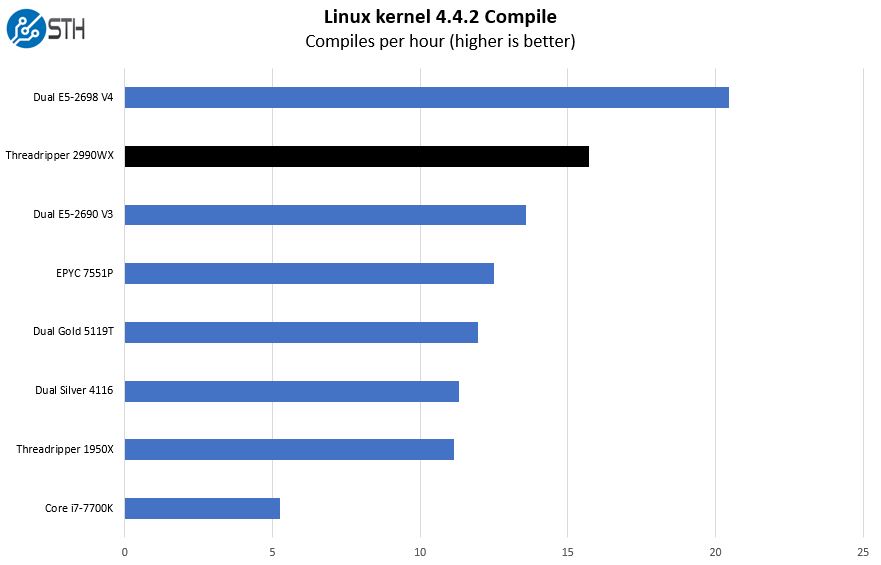
This is always an interesting test as it stresses a number of different aspects of CPU and memory performance. At the end of the day, the AMD Ryzen Threadripper 2990WX benefits from high clock speeds which push it past the single-socket AMD EPYC 7551P and thoroughly into dual Intel Xeon territory.
c-ray 1.1 Performance
We have been using c-ray for our performance testing for years now. It is a ray tracing benchmark that is extremely popular to show differences in processors under multi-threaded workloads. Our previous generation benchmark suite uses a 4K resolution test. We normally do not publish this anymore since higher-end SKUs do not offer enough differentiation. Since our data set is larger with the 4K tests on the embedded side, we wanted to get some numbers out there.
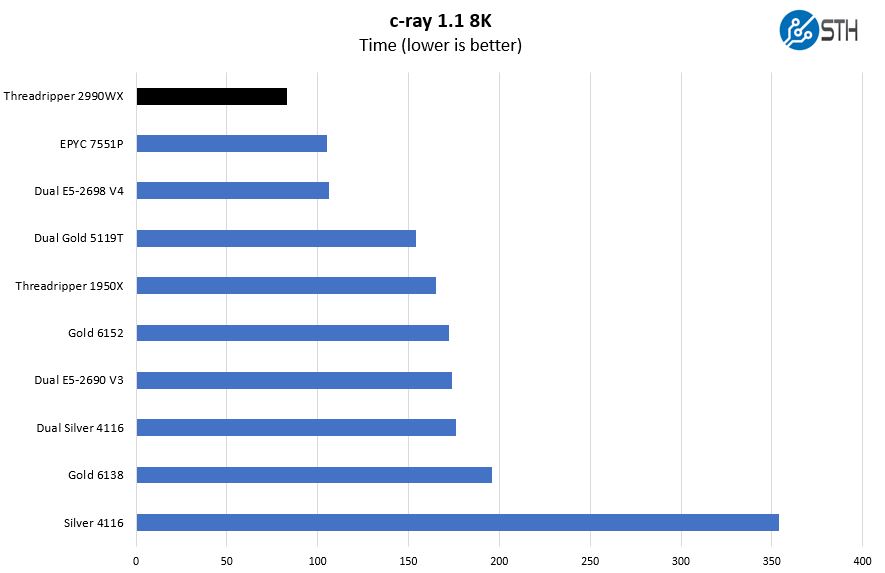
C-ray on Linux and Cinebench on Windows show a similar picture. Since we are doing this review a bit later in the cycle, we are not going to post the Cinebench figures for this chip. The takeaway is that if you do not have a lot of memory access and primarily stay within the on-die cores/ caches, the AMD Ryzen Threadripper 2990WX is a blazingly fast chip. AMD’s Zen architectures do well here and so having 32 fast AMD Zen+ cores leads to an excellent result, well beyond that of the AMD EPYC 7551P.
7-zip Compression Performance
7-zip is a widely used compression/ decompression program that works cross-platform. We started using the program during our early days with Windows testing. It is now part of Linux-Bench.
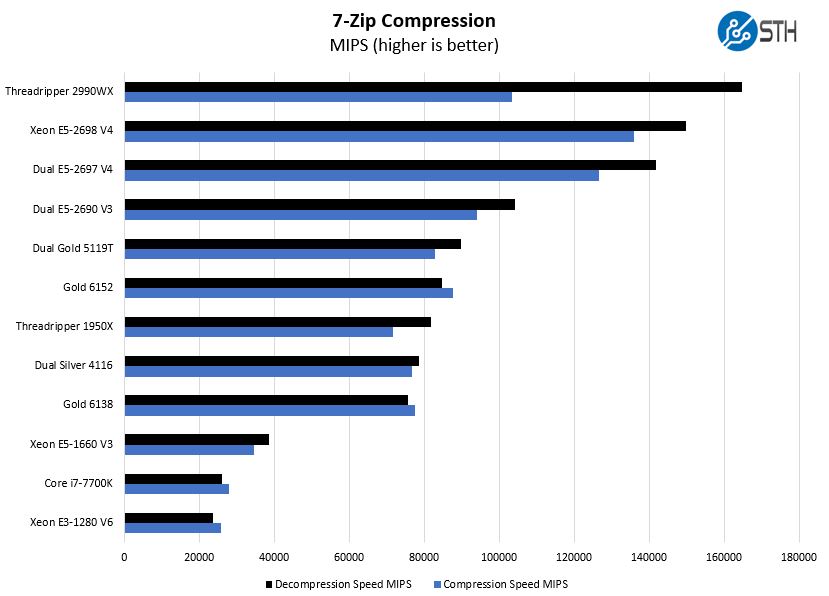
Our default is sorting on the decompression speed for this chart. You will note that our compression test shows the architectural limitation of leaving half of the cores another hop from main memory. To be clear, this is still an extremely fast chip, but it has the architectural limitation keeping it from blowing away just about anything else out there. This is one of the cases where we can see the impact clearly.
NAMD Performance
NAMD is a molecular modeling benchmark developed by the Theoretical and Computational Biophysics Group in the Beckman Institute for Advanced Science and Technology at the University of Illinois at Urbana-Champaign. More information on the benchmark can be found here. We are going to augment this with GROMACS in the next-generation Linux-Bench in the near future. With GROMACS we have been working hard to support Intel’s Skylake AVX-512 and AVX2 supporting AMD Zen architecture. Here are the comparison results for the legacy data set:
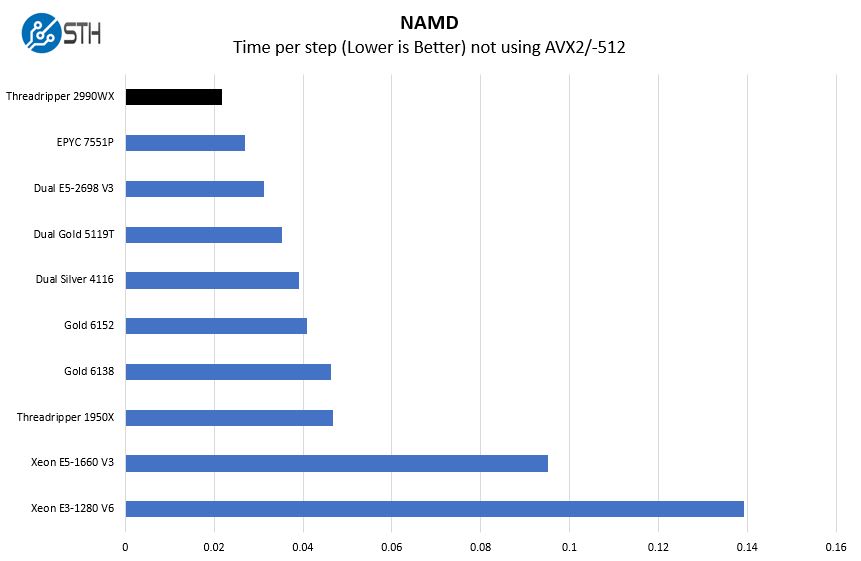
Here we get really good performance with the raw throughput of the cores themselves with AVX2 not being used. It is pushing well beyond what some price competitive dual socket Intel Xeon Silver/ Gold solutions can offer in this space and well beyond the previous generation flagship the Threadripper 1950X.
Sysbench CPU test
Sysbench is another one of those widely used Linux benchmarks. We specifically are using the CPU test, not the OLTP test that we use for some storage testing.
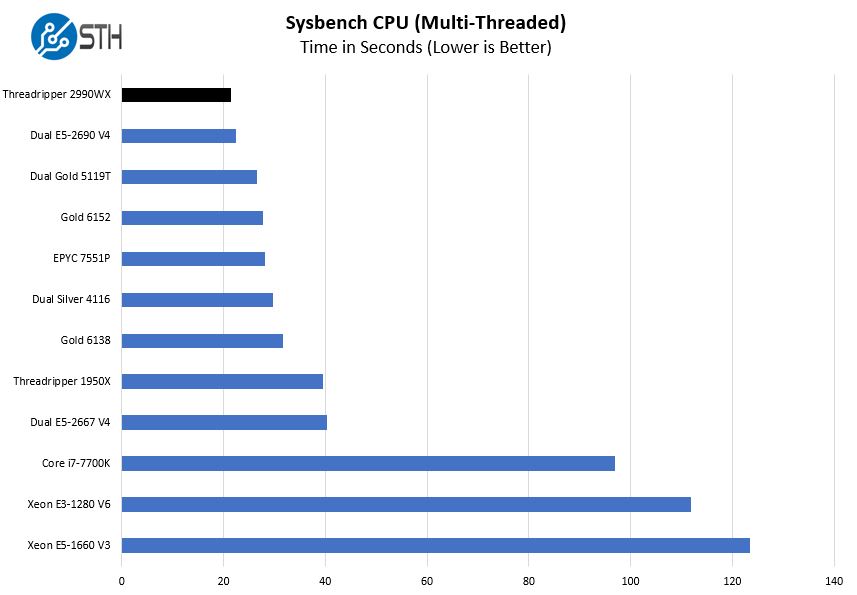
After reviewing the multi-threaded benchmark figures the chip certainly looks good. AMD architecturally does well here across its line. There is an important difference and that is single threaded performance. We are going to sort this chart to align it to the multi-threaded results:
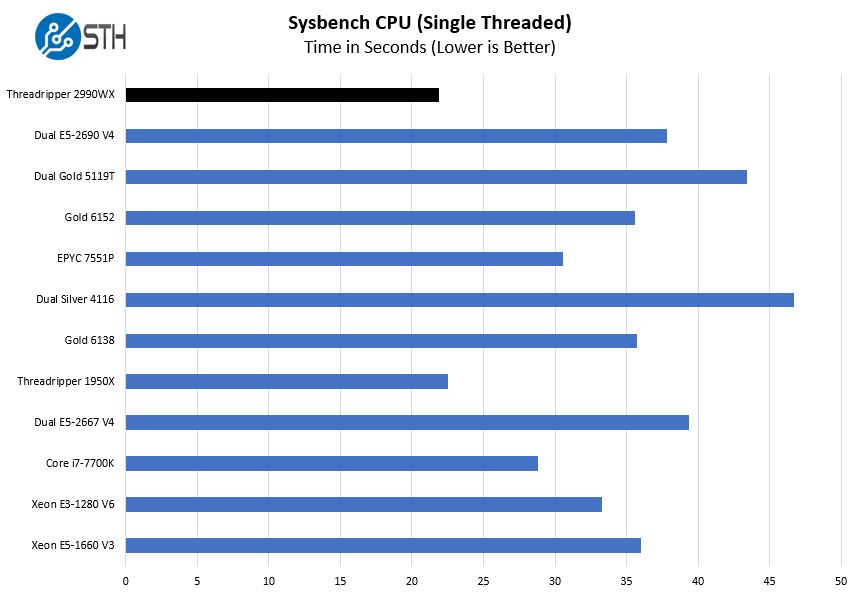
The Zen+ architecture, plus high clock speeds lead this system to be a winner. This is a great example of why we see this as a good workstation chip. Unlike in servers, single threaded performance tends to be a bigger deal in some workstation applications since a user’s tactile experience with a machine can be tied to waits.

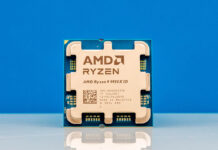


Boxx sure knows how to make this system as expensive and slow as possible.
Just build a similar system with 2 GPU’s, DDR4-3200 CL14, 3 970 pro’s and some spinning disks that beats the sh*t out of this system.
I’d bet your build performs better because the Boxx system comes with ECC memory, the fastest of which is 2667/CL19. They’re trading off absolute performance for stability, which many workstation users require.
There is no mention of ECC memory on the Boxx website nor on STH so I wouldn’t know.
What I do know from the boxx website is that they charge a lot of money for the used components $ 2,582 for 96 GByte of memory, that is almost $27 per GigaByte, where ECC-UDIMM DDR4-2667 CL19 cost less than half per GigaByte.
https://www.boxx.com/products/workstations/t-class
“32GB DDR4-2666 REG ECC”
But yeah, that’s a ridiculous premium over off-the-shelf components for just to have a central vendor for business support.
APEXX T3
128GB DDR4-2666MHz
APEXX T3 (1st Gen)
32GB DDR4-2666 REG ECC
Since this thread is about the second gen. there is still no mention about ECC.
Would love to see the bios setting of the cheap taichi board (use Fatal1ty myself).
Great stuff !
One question: unlike Epyc, Threaripper 2990X has direct access to memory for only 2 cores among the four zen cores. Is the linux release you’re using is optimized to automatically fork processes if asked by user applications that are memory hungry on the relevant cores (those with directe acces to memory) ?
I’ve read elsewhere that microsoft is going to supply a patch to handle this kind of situation.
Samsung makes unbuffered b-die ECC, anyone building TR workstations really should use that over micron.
Yep 32 GB UDIMM-ECC: Samsung M391A4G43MB1-CTD